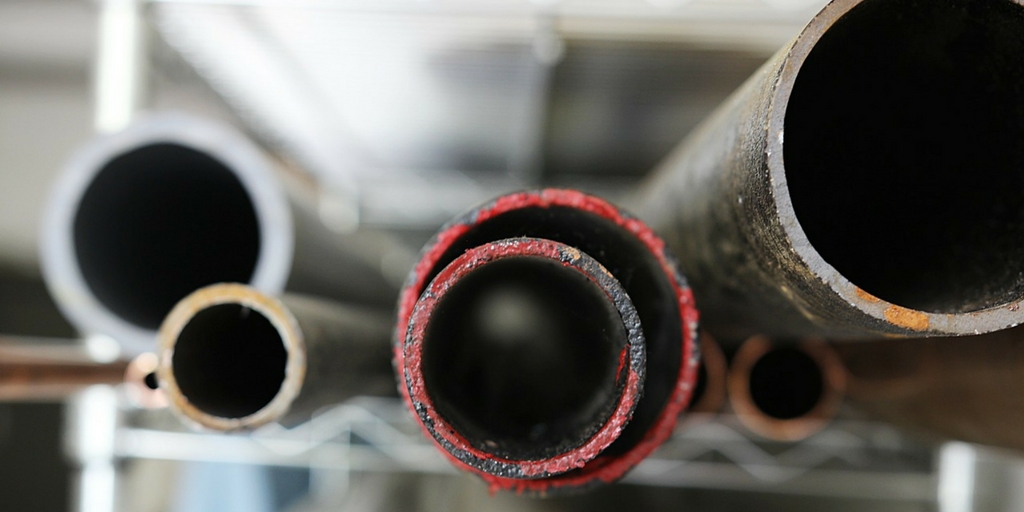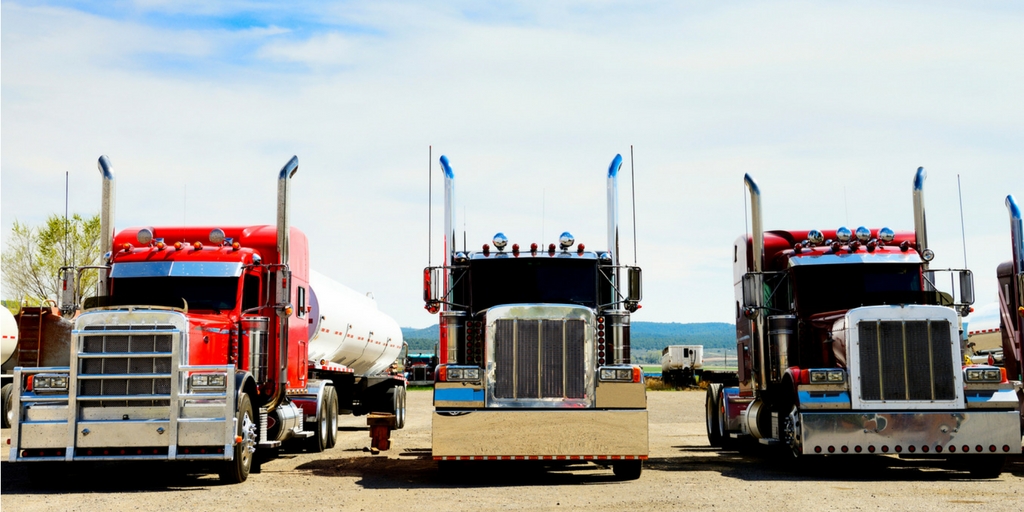
by Jennifer Hart Yim | May 10, 2017 | Blog, Current Events, Logistics, Strategy, Supply Chain
Updated January 16, 2025
Starbucks’ closely managed supply chain may be the key to the premium coffee giant’s success.
Highlights:
- Starbucks attributes much of its success to its vertically integrated supply chain, managing every step from coffee bean sourcing to final cup, allowing for consistent quality control and ethical sourcing practices across its global operations.
- Unlike its competitor Dunkin’ Donuts, which outsources most operations, Starbucks directly manages relationships with 300,000 coffee growers worldwide through its Coffee and Farmer Equity (C.A.F.E.) standards, ensuring both quality standards and ethical practices.
- This supply chain strategy has contributed to Starbucks’ significant market dominance, with the company generating $32.2 billion in revenue in 2023 and operating nearly 37,000 stores globally, far outpacing Dunkin’ Donuts’ presence and revenue.
The Secret is the Supply Chain, According to Starbucks
The international coffee giant has widely studied and acclaimed supply chain management practices, which, according to some, make Starbucks’ coffee and customer experience superior to those of its competitors.
So, what exactly is Starbucks doing differently than other international coffee retailers? Is its coffee truly better?
The Standards
Starbucks uses a vertically integrated supply chain, which means that the company is involved in every step of its supply chain process, all the way from the coffee bean to the cup of coffee sold to consumers. The use of a vertically integrated system means that Starbucks works directly with its nearly 300,000 worldwide coffee growers. The company believes that interacting directly with farmers ensures that all of its coffee beans will achieve the same quality and flavor standards.
Starbucks also works directly with growers because the company is committed to only selling ethically sourced, Fair Trade coffee. The company even has its own Coffee and Farmer Equity (C.A.F.E) standards and Coffee Sourcing Guidelines (CSG), which require that all suppliers must meet certain ethical, sustainability, and quality standards. Starbucks uses a stringent vetting process to ensure its growers meet and adhere to these guidelines.
Not only do the C.A.F.E. practices and CSG benefit Starbucks, they also provide advantages for suppliers. The guidelines protect workers’ rights and ensure that all growers have safe and humane working conditions. Suppliers also must adhere to minimum-wage requirements and commit to not using child or forced labor.
Lastly, as a part of its C.A.F.E. guidelines, Starbucks commits to providing its suppliers with special training and education programs. Starbucks’ direct interaction with growers, along with their sourcing and social responsibility standards, make suppliers feel like they are integral parts of Starbucks’ corporation. The close relationship and frequent communication between Starbucks and its suppliers, therefore, make the company’s supply chain less susceptible to major disruptions, such as overplanting or worker shortages.
The Process
After the growers pick and package the coffee beans, truckers drive the unroasted beans to ocean liners that ship the beans to six storage sites in the U.S. and Europe. The beans are roasted in these storage facilities and then packaged for shipment to Starbucks’ eight central, and forty-eight regional, distribution centers. By only using a handful of storage facilities, Starbucks can closely manage the sites’ operations and guarantee that all beans are roasted and packaged in the exact same way.
The company’s close control over the roasting process also ensures that Starbucks’ coffee tastes the same in all of its retail locations. Starbucks’ active participation in the supply chain also ensures that the distribution centers receive the products they need so they can fulfill orders and make their roughly 70,000 weekly deliveries on time.
The size and scale of Starbucks’ operations should make its supply chain inherently complex. In 2008, however, Peter Gibbons, the Executive Vice President of Global Supply Chain Operations, overhauled the company’s expensive, ever-growing supply chain into a streamlined, cost-effective process that relies on simple operational structures and metrics.
First, he grouped all supply chain jobs into four categories: plan, source, make, and deliver. Next, he developed a highly centralized logistics system that allows the company to better manage and coordinate its global network. Lastly, he implemented a binary, 0 or 1 “scorecard system” to assess all supply chain activities on four metrics: safety in operations; service measured by on-time delivery and order-fill rates; total supply chain costs; and enterprise savings.
Along with the simple tools and processes that Gibbons created, Starbucks also relies heavily on digital technology to manage its supply chain. The company uses an automated information system that allows it to monitor demand, inventory, capacity, and scheduling in real time. Therefore, Starbucks can quickly adjust its plans and operations as needed. Starbucks’ simple structure and management tools, as well as its use of digital technology, allow the company to achieve a high level of efficiency and agility, both of which are key to organizational success.
The Market
Starbucks’ biggest competitor in the international coffee market is Dunkin’ Donuts. In contrast to Starbucks, which owns its entire supply chain, Dunkin’ Donuts outsources its production processes. Dunkin’ Donuts relies on a third-party intermediary, National DCP, to handle the company’s supply chain operations.
Dunkin’ Donuts also franchises its manufacturing locations, as well as nearly all of its retail spaces. Conversely, Starbucks franchises less than 50% of its retail locations, and, as of March 2016, was no longer accepting applications for new U.S. franchises. Starbucks also uses few to no intermediaries to carry out its supply chain operations.
Unlike Starbucks — which is committed to using 100% sustainably grown, Fair Trade-certified coffee beans — Dunkin’ Donuts promises to produce its coffee as “sustainably as possible.” The company works with Fair Trade USA and the Rainforest Alliance to implement sustainable sourcing practices, as well as training programs for farmers. However, Dunkin’ Donuts only offers two permanent menu items that are Fair Trade-certified: 30% Rainforest Alliance Certified™ Dark Roast Blend and 100% Fair Trade Certified™ espresso.
While Starbucks’ critics may try to argue that the company’s supply chain model and social responsibility efforts are not true differentiators, the statistics tell a different story.
Starbucks was founded roughly twenty years after Dunkin’ Donuts, but the company is already much larger than its rival. In 2023, Starbucks generated $32.2 billion dollars in revenue, while Dunkin’ earned only $1.4 billion. Starbucks also has a larger global presence, with nearly 37,000 retail stores in 80 markets worldwide, compared to Dunkin’s 13,500 locations in 40 countries.
Starbucks also primarily markets to higher-income customers looking for a premium coffee experience, while Dunkin’ Donuts has traditionally retailed to more blue-collar consumers who want coffee on the go. Therefore, Starbucks’ clientele is willing to pay more for coffee that they perceive to be made from higher-quality, socially responsible sources. It used to be that Starbucks’ customers would also pay more for coffee in order to enjoy the amenities offered in the company’s coffeehouses, but even with a consumer shift towards drive-thru and mobile pick-up preferences, Starbucks’ customers seem willing to pay more for convenience. Because Starbucks’ patrons generally have higher disposable incomes than those of Dunkin’ Donuts’ customers, they are less likely to adjust their consumption patterns during economic downturns. Thus, Starbucks is less susceptible than Dunkin’ Donuts to major fluctuations in revenues that could result from negative macroeconomic swings.
The Future
While Dunkin’ Donuts loyalists, particularly those in New England, may never accept the merits of Starbucks coffee, majority opinion argues that Starbucks offers higher-quality beverages and better customer experiences. Statistics show that Starbucks is outperforming its rival, which is evidence of the success of a simple and efficient global supply chain. In fact, Starbucks, which is already larger than Dunkin’ Donuts both domestically and abroad, plans to open more new retail spaces than its competitor over the next five years.
Therefore, one question remains for coffee drinkers and market analysts: Does America actually run on Dunkin’? Or is Starbucks’ coffee really the fuel running our caffeine-crazed country (and world)?
We love writing about all things related to the supply chain, including Starbucks’ supply chain. Need quality content written for your supply chain business? We’re a content agency focused exclusively on working with companies like yours. Let’s chat.
This article is part of a series of articles written by MBA students and graduates from the University of New Hampshire Peter T. Paul College of Business and Economics.
Related posts:

by Fronetics | May 1, 2017 | Blog, Leadership, Strategy
Companies usually try to understand failure, but what could they learn from analyzing their successes, too?
“Success is going from one failure to another without loss of enthusiasm.” Winston Churchill
Failure is said to be inevitable, and we all know it to be true. Any new venture is built on the hope of success. But accepting and managing failure is key to actually obtaining success.
Companies have a responsibility to ask the tough questions when things go awry. We have all been in these meetings: we diagnose failures, and we dissect the process, tools and staff involved to get to the root of the problem. Unfortunately, most companies only step back and really dive into what happened when something bad happens.
But what if companies took the same approach when something went right?
Focusing on the lessons in success
Companies are all a work in process. We learn as we go, and that learning should include understanding our successes. Shifting the focus from ‘what went wrong’ to ‘what went right’ creates a foundation for being able to recreate success in your organization.
Identifying and analyzing the components of a successful process can be the first step in moving into this new mindset. Paul Michelman, editor in chief of the MIT Sloan Management Review, experimented with dissecting his the publication’s successes and quickly discovered that their best processes start with transparency. Michelman wrote:
We plan a pipeline of content that is stored in a document accessible by the key participants. We track each content item’s progress on a shared project management platform. The few times we encounter bumps, a lack of information sharing is almost always at fault.
Though Michelman admits his research is unscientific, the key factors he has identified in their success stories has helped his business focus on what’s working, instead of waiting to dissect failure.
Technology can help
In today’s world, there is no end to the amount of data you can collect on your business. Your company’s digital presence is an easy place to start.
Tools like Google Analytics can give you advanced insight into how prospects are interacting with your company online. You can analyze how people are finding your business, and how they’re moving through your website all the way to making purchases. In other words, you can begin to analyze all of the little successes that make your business turn. How can you replicate that success on new projects and processes?
When things are going well, most companies don’t see the need to reflect on what happened, what went right. But don’t let this opportunity slip by. You should examine failures, but you should also look closely at successes. Take the time to brainstorm with your team on what you’re doing well and how you can keep up that success while you plan for future growth. —
Related posts:

by Fronetics | Apr 20, 2017 | Blog, Manufacturing & Distribution, Strategy, Supply Chain
Industrial product buyers are changing how, why, and where they buy. Are you prepared to accommodate their preferences?
Distribution has always been an industry built on relationships. The loyal customer favored companies where they developed strong working relationships with a sales representative.
But recently distributors have felt a shift in the tide. Buyers have grown impatient with one-on-one sales relationships and quickly embraced the convenience of buying directly from manufacturers, for one. Distributors are left scrambling to keep up with such trends.
So how do distributors stay ahead of the game?
UPS recently conducted a study of the behaviors, preferences and perceptions of industrial product buyers. It found four major market forces driving change: customer demands, direct-from-manufacturer purchasing, e-commerce, and millennials. Additionally, the study offered up a few interesting takeaways we thought were worth highlighting.
5 trends in industrial product buying
1) Purchasing drivers
The study asked for the top five factors that are most important when purchasing industrial supplies from buyers’ preferred distributor size. Though “best prices” was a top contributing factor across the board, as you can imagine, other answers varied from small distributors to large.
For those purchasing from smaller distributors, 58% of customers ranked personalized service as most important. Among those preferring large distributors, 61% of buyers wanted a wide selection of products.
Takeaway: There is a strategic opportunity for mid-size distributors to cater to both types of buyers. Mid-size distributors focusing on larger selection with personalized service can offer customers the best of both worlds.
2) Friends stick with friends
Word of mouth is still the top tool buyers use to research a new distributor. Studies have shown that consumers trust recommendations from people they know more than any other form of advertising, and the same is true for distribution. Personal references and word of mouth are heavily influencing buyer trends.
Takeaway: Distributors need to have their ears to the ground and really focus on what buyers are saying. If the word on the street is that your company needs to make changes, make them. You want to consumers raving about your company, so others will follow suit. Also, consider the value of review sites.
3) Internet is king
The importance of the internet is old news. But UPS’s study found a substantial jump in buyers’ going online to purchase industrial supplies. In 2013, 57% of buyers were hitting the web, and that number grew a significant 9% in just four years.
Takeaway: Suppliers need to make sure that their websites are a one-stop shop for customers. Buyers need to be able to find answers about products, confirm product details, and access their negotiated prices all online. Spending the time and money to update your website is key to giving buyers a preferred way to make purchases.
4) User-friendly everything
Along with wanting to make purchases online, industrial product buyers want the ease and convenience of user-friendly websites. 72% of buyers said they would shift their spending to a different distributor with a more user-friendly website, and that number increases to 85% with buyers age 21-30. These findings confirm the shift from relationship-based buying to the experience-driven trend.
Takeaway: Brand loyalty is no longer based solely based on product quality and personable sales staff. Distributors need to take into account convenience, speed, and a good customer experience. What appeals to customers is the ease of their online service. Staying ahead of trends will involve constant maintenance of your website and its usability.
5) Cross-channel consistency
Industrial product buyers may be making most of their purchases online, but they are definitely checking in with friends and social media before making any decisions. Oftentimes websites don’t provide enough information, and, by default, they rely on other channels to confirm details before making purchases.
Don’t let users find conflicting messages from different resources. Cross-channel consistency will give your company an edge on the competition.
Takeaway: Make sure that your off-site and onsite messages are clear across all channels. Examining the buyer experience on and offline — and making sure that all channels are communicating the same message — can elevate your company’s position among your competitors.
Related Posts:

by Jennifer Hart Yim | Apr 18, 2017 | Blog, Current Events, Logistics, Strategy, Supply Chain
Blockchain is coming, and it offers the potential to shake up Supply Chain and Logistics like few other technologies coming down the pike.
This guest post comes to us from Argentus Supply Chain Recruiting, a boutique recruitment firm specializing in Supply Chain Management and Procurement.
A few months back, we wrote about Blockchain as an emerging technology and tool for Supply Chain transparency. It’s a pretty incredible technology that stands to reshape big aspects of the economy in general and Supply Chain in particular – but it’s also pretty difficult for the common person to understand, which doesn’t help matters. But Blockchain is coming, and it offers the potential to shake up Supply Chain and Logistics like few other technologies coming down the pike.
In the simplest terms possible, Blockchain is a distributed ledger technology that allows a decentralized network to track transactions within a system. It’s the technological basis for Bitcoin that solved the problem of how to verify transactions for a digital currency without relying on a central entity or bank.
One of the most relevant parts of Blockchain for Supply Chain purposes is the fact that Blockchains tend to be more open and transparent than other sorts of ledger systems – anyone participating in the network can see the transactions. Which has led Financial Services companies to seek out Blockchain technology to more quickly make cross-border payments and verify contracts. It’s also led to companies using Blockchain’s openness to redefine transparency about where they source their products. For example, seafood companies and other food production companies with overseas sourcing can use Blockchain to keep a solid record of every transaction along the Supply Chain, so that consumers can rest assured that the fish they’re buying was farmed sustainably, without using human slavery.
Here’s another new application: shipping giant Maersk is partnering with IBM to use Blockchain to track shipping containers. The goal here isn’t as much transparency as efficiency – which is a much-beloved quality in contemporary Supply Chains. Tracking shipping containers can involve dozens of people and hundreds of individual interactions as it makes its course along the Supply Chain from, say, China to the West Coast of the U.S. Maersks’s new Blockchain program will allow all stakeholders to witness the shipment’s progress and status at all times. The idea is to cut down on paperwork involved and allow both suppliers, buyers and shippers to streamline the process.
At the same time, Wal-Mart is delving into using Blockchain for food safety. Whereas merchants traditionally struggle with unfortunate product recalls that happen from time to time – pinpointing a specific SKU, a specific shipment, a specific vendor, of a product that’s made a customer ill and then taking it off the shelf – Wal-Mart is hoping that Blockchain will help it glean important data from receipts all up and down the Supply Chain: where was the food grown, who inspected it, etc.?
This can help the company be more strategic in removing items from shelves, avoiding the kind of broad-brush recalls (“pull all the spinach!”) that can cost a company millions.
With Wal-mart, Maersk, IBM, and other companies like Nasdaq and BHP Billiton starting to make their way into using Blockchain, it’s clear that the burgeoning tech has finally arrived on the scene.
Any Blockchain experts out there? Are there other applications or implications for Procurement and Supply Chain that we might not be thinking of? Let us know in the comments!
Related posts:

by Jennifer Hart Yim | Apr 13, 2017 | Blog, Logistics, Strategy, Supply Chain, Transportation & Trucking
This guest post comes to us from Adam Robinson, director of marketing for Cerasis, a top freight logistics company and truckload freight broker.
Growing woes over a forthcoming capacity crunch are not going away anytime soon. But, the capacity crunch may have a major impact on the freight driver shortage and vice versa. In a sense, fewer drivers mean that capacity will grow tighter. Yet, as capacity shrinks, the incentive for drivers increases. As 2017 moves forward, it may be a year that the driver shortage comes to a head, but it might not be as dismal as some shippers have been led to believe.
The Freight Driver Shortage IS BAD and Getting Worse.
The American Truckers Association cites approximately 48,000 unfilled trucker positions, reports Saul Gonzalez. Since 2005, the freight driver shortage has grown from 20,000 unfilled positions to 70,000, and some reports suggest the shortage may worsen to more than 170,000 vacancies by 2025. Meanwhile, the average of age of today’s trucker is 49, and more truckers are aging out and retiring from the industry. This contributes to a growing bleakness among the trucking industry, causing turmoil among shippers and logistics providers. But, there is a light at the end of the proverbial tunnel.
Could Automation Reduce the Impact of the Driver Shortage in 2017?
Politicians and industry experts have claimed for more than a year that automation and drone delivery will be able to handle the driver shortage, and while this belief may hold true, the widespread deployment of driverless trucks is still far from reality. As explained by Sean Kilcarr of FleetOwner®, the political discussion seems to continue pointing toward more affordable and available education of futuristic technologies.
This might be true in the future, but current political turmoil suggests that any such move will be met with extensive resistance from the opposing political party. In other words, education and re-skilling of workers to service autonomous vehicles and automated technology is not ready for widespread deployment. However, the answer to the growing driver shortage might lie in the capacity crunch itself.
How Could the Capacity Crunch Help the Driver Shortage?
It sounds insane; tightening of the capacity crunch could help solve the driver shortage. Look at the historic tightening of capacity in the shipping industry. In 2004, 2011 and 2014, capacity reached a critical point. Yet, major carriers, reports Jeff Della Rosa of Talkbusiness.net, met the increased demand by increasing trucker wages by 7-percent per loaded mile. Consequently, the overall annual wage of drivers increased during these three years, providing temporary relief for a looming driver shortage.
2017 appears to be another year in the lineup of driver wage increases too. Companies, including Crete Carrier, Baylor Trucking and Shaffer Trucking and CFI have implemented per-mile rate increases. Meanwhile, Swift Transportation, Schneider, and CGI have unveiled $4,000 – $8,000 bonuses for new drivers. So, the wages are starting to reflect the demand for drivers. In fact, Delco expects industry-wide wage increases among trucking companies throughout the remainder of 2017.
Will the Driver Shortage Succumb to Capacity Crunch After All?
It’s easy to gain a false sense of security as wages climb among the trucking industry, and for shippers, this means that they may be considering abandoning previous preparations for worsening of the shortage. However, shippers need to continue working to help the freight driver shortage. Yet, shippers want to pay the least cost possible for transportation of goods, which results in lower profits for carriers and wages for drivers. So, how do shippers help prevent the driver shortage from worsening?
The answer is working with multiple carriers to find the best rates without undercutting the industry. In other words, more shippers will turn to third-party logistics providers (3PLs) who offer more than just shipping management, to increase profit margins across their enterprise, allowing for more expendability among the actual freight costs of shipping. In other words, savings found from auditing and eliminating redundancies in paperwork frees funds for use among actual freight costs. To shippers, the overall costs decrease, but to truckers, it means more money available for use as wages, benefits, and better equipment.
In a Nutshell.
As capacity tightens in the industry, shippers will face the challenge of reaching more customers with fewer resources, and the freight driver shortage may spike temporarily. However, the capacity crunch itself will help curb the driver shortage, and reaction to capacity issues will further the cause of better wages and incentive for more drivers to enter the industry. Of course, nationwide low unemployment and better wages among other industries will still draw people away from the trucking industry, reports the Journal of Commerce (JOC). Remember the saying, “it’s always darkest before dawn.” The driver shortage may not come to a head just yet, provided the industry continues to increase wages and work to increase driver retention.
Related posts:

by Fronetics | Apr 10, 2017 | Blog, Content Marketing, Marketing, Strategy
Are your marketing emails annoying your customers and prospects?
We’ve all felt it: the visceral annoyance on opening an email — because it’s the fifth one from the same company in two days, or because it’s packed with hyperbole or an off-putting sales pitch. As it turns out, recent research has shown that this reaction is only too natural. We’re predisposed to view the tone of email more negatively than it was written.
Of course, email is an important tool for marketing your business. But it’s important to strike a balance, making sure you’re getting your message out without turning off potential buyers.
To help you achieve this delicate balance, here are three of the most off-putting email offenses — and tips to avoid them.
3 marketing email crimes to avoid
1) Imperatives
How many times a day do you receive emails, “Buy!” or, “Act fast!” in the subject line, usually followed with the anxiety-producing exclamation point? For most of us, this commanding language is irksome, and the emails end up in the trash folder.
Instead of commanding your potential buyers, try a subtle linguistic change. For example, rather than an imperative, try using the conditional: “Would you?” This way, you avoid coming across as overbearing, and you respect the right of your readers to make a decision about their actions.
2) Too many emails
It’s important to be conscientious and keep your message consistently on the minds of your target audience. But too many emails can be counterproductive, as your readers will start to tune you out or, worse, mark you as spam.
3) Failing to acknowledge your readers’ workload
Few things are more irksome in email correspondence than lack of consideration. Bear in mind that when your carefully crafted content pops up in your potential customer’s inbox, you’re giving them a task.
You can easily avoid potential annoyance on the part of your readers with a simple acknowledgment of their workload. For example, “I recognize that your schedule is hectic, so let me be brief…” This not only acknowledges that they are busy, but demonstrates that you respect, and will be a good steward of, their time.
The upshot is that while email is an excellent marketing tool, it’s important to always put yourself in the shoes of your readers before you press send. Make sure that your message isn’t getting overshadowed by avoiding these marketing email crimes.
Related posts:






